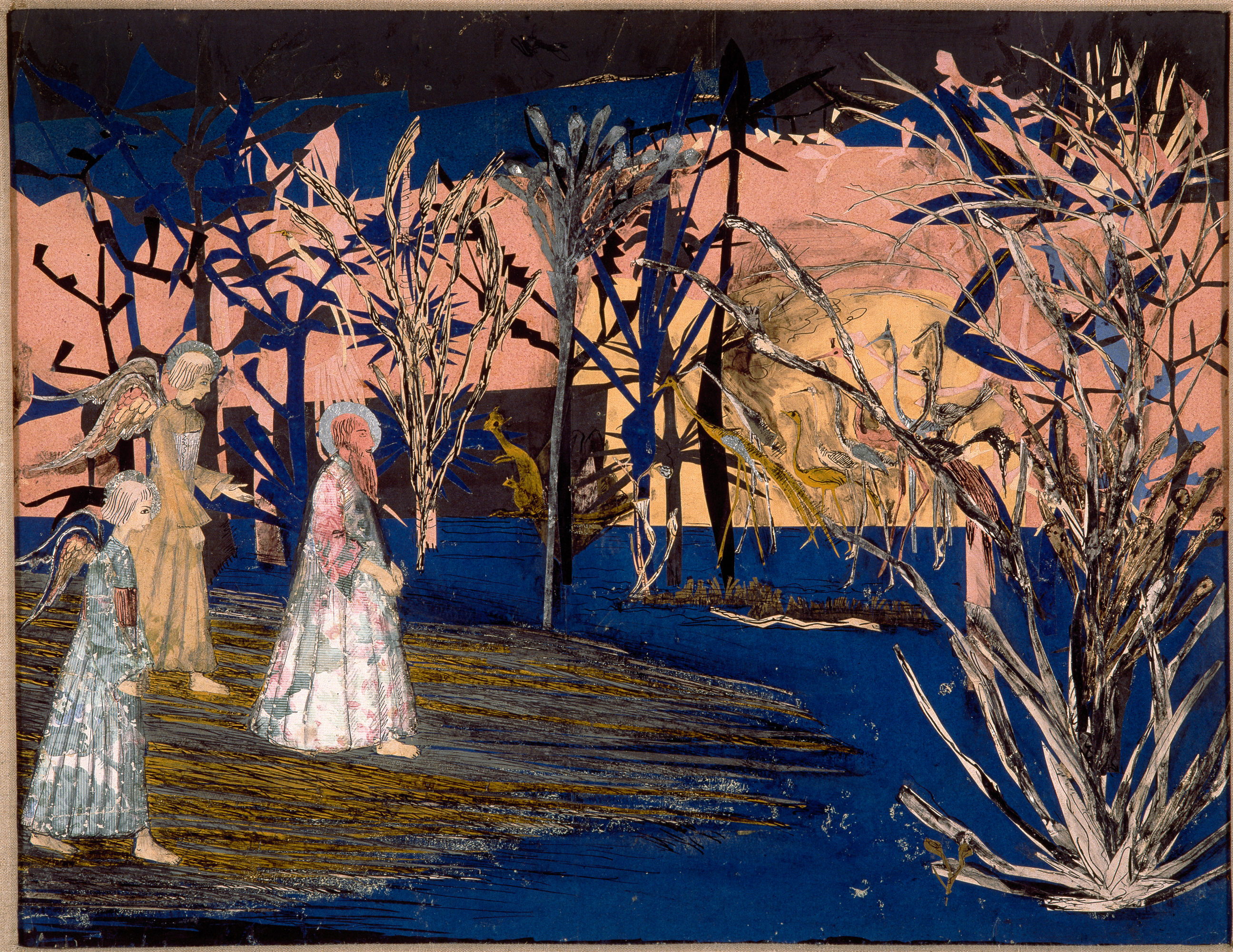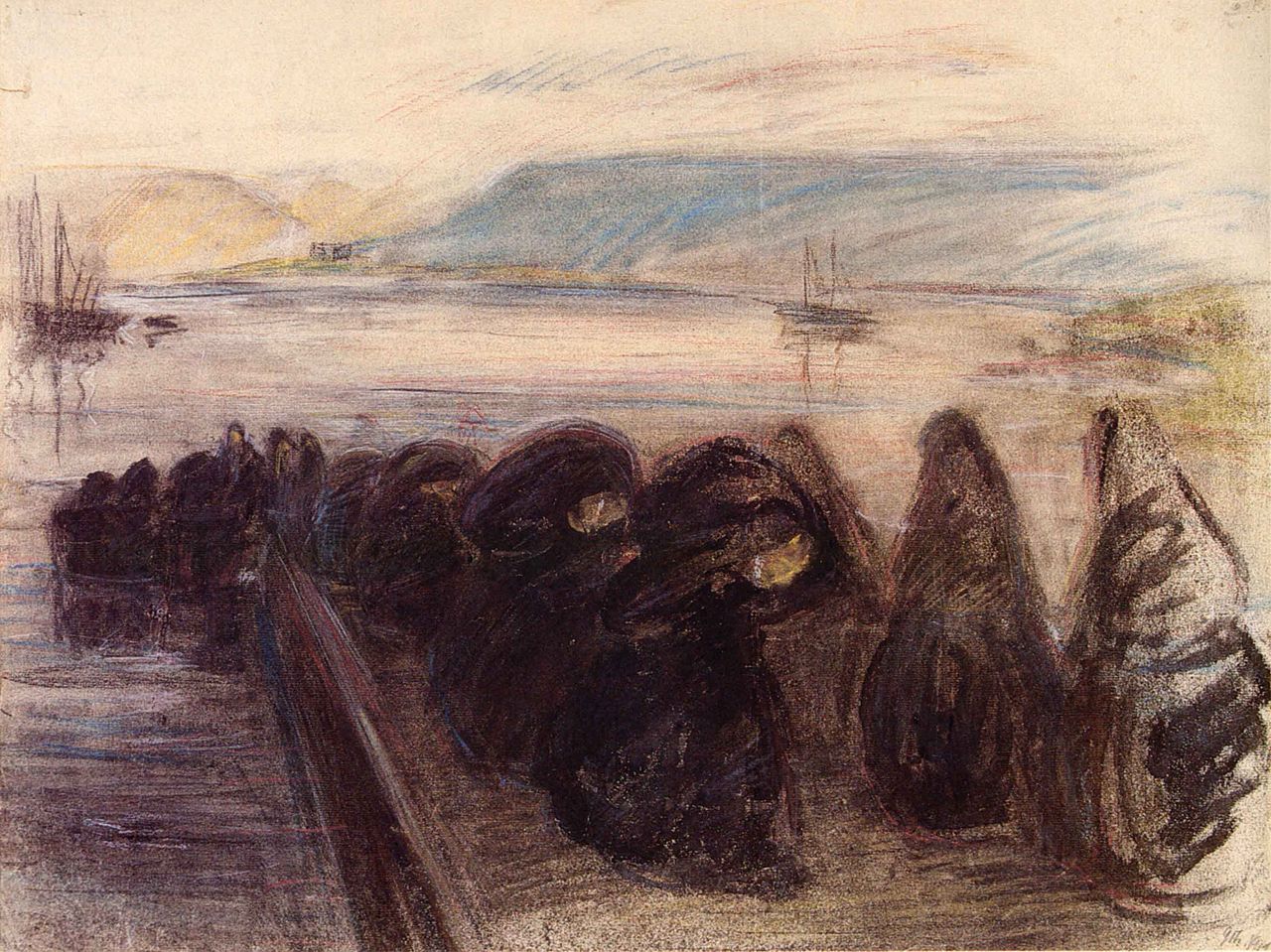Guðmundur Thorsteinsson, known as Muggur, was born in Bíldudalur in the Westfjords of Iceland in 1891. He was one of eleven children of fishing-vessel owner Pétur Thorsteinsson and his wife Ásthildur Pétursdóttir. Muggur grew up in comfortable circumstances and enjoyed the support of his family in his studies and work. He studied in Copenhagen at Copenhagen Technical College from 1908 to 1911 and Det Kongelige Akademi for de Skønne Kunster (Royal Danish Academy of Fine Arts) from 1911 to 1915. On graduation he had the opportunity to travel around Europe and to New York. Muggur started at a young age to draw and paint, and to work on various crafts; in his childhood home the family would sit together in the evenings, sewing, reading, and chatting. Hence it was natural for him to employ diverse materials in his art.
Muggur's Seventh Day in Paradise is one of his religious works, and also an example of a work made in an unconventional manner—using a range of ready-made papers, both matte and glossy, as well as paper the artist colored himself. The diversity of the materials used by Muggur set him apart from most Icelandic artists, as such techniques were classified more as handicrafts than serious art. The picture space is like a stage set: God enters from the left, followed by two angels. According to the Old Testament, on the seventh day, when God had finished creating the heavens and the earth, he rested. Close scrutiny of the picture reveals exotic animals such as giraffes, a kangaroo and long-legged birds. The mysterious pink light reveals the face of the Creator, finely drawn, bearing witness to the artist´s meticulousness. The contrast between the dark-blue sky and the luxuriant golden vegetation in this fantastical world awakened spiritual ideas for many in days gone by, when prints of this picture hung in many Icelandic homes. Muggur lived an eventful life, mostly in Copenhagen, where he died of tuberculosis aged only 32. His oeuvre comprises mainly works in small format—prints and drawings, as well as textile works. His largest work is an altarpiece depicting Christ Healing the Sick in the church at Bessastaðir, the presidential residence.
We present today's masterpiece thanks to the National Gallery of Iceland. <3
P.S. Here's a story about a 21st century Grand Tour to the North, both in art and real life. : )


 Muggur (Guðmundur Pétursson Thorsteinsson)
Muggur (Guðmundur Pétursson Thorsteinsson)